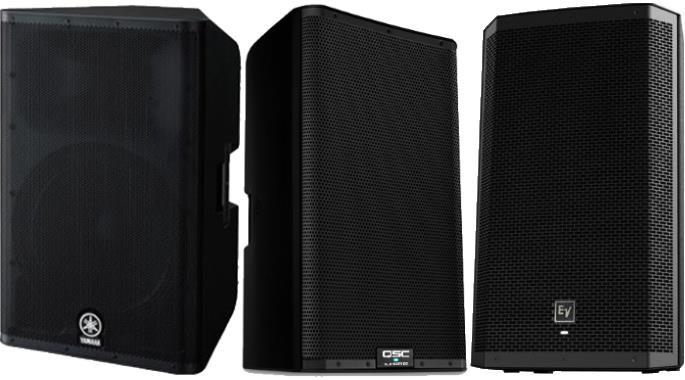Powered PA speakers have amps built directly into the speakers and are a great option for those looking to create an easy yet powerful live sound system. Simple PA systems can directly plug in their powered (also known as active) speakers into the mixer and reduce the total number of cables required.
If you’re wondering how to use this awesome piece of equipment for a band performance or any live sound, our handy guide will cover all the basic steps of the process.
Planning and Positioning
For a live band, you’ll need three types of speakers with each having a different use in conveying the sound.
• Main speakers: deliver the most sound to the audience.
• Subwoofers: designed to boost low-frequency sound playback.
• Monitor speakers: as the name suggests, monitors the sound during the performance.
It is recommended to place the mixer in the center of the audience and at a height that is easily accessible for adjustments throughout the performance. The subwoofer powered speaker should be placed on the bottom of the stage.
The main speakers can be placed on the floor or on a stand depending on your needs and should be around the front corners of the audience area. However, many professionals agree that having your PA speakers at the audience ear level is best.
Powering Up
Before you begin to turn things on, the first thing to do is to put the volume to the minimum for all your equipment. Check that all your components are plugged in correctly. Then, connect one microphone as a tester to see if the system is working before connecting other components to the mixer.
Most PA speakers have pretty standard cable systems. Powered PA speakers contain balanced XLR inputs, so simply use XLR cables for the inputs. These are the standard 3-pin connectors that are used across the audio industry. However, you may also come across TRS cables, which are a tip-sleeve cable at a 1/4 width.
Soundcheck
The importance of this step is not to be underestimated, especially for new speaker systems. Make sure to check that your new speaker set up actually is up and running before the performance.
Start by powering up the monitoring speakers and test one mic and equipment at a time. Include the musicians and use an equalizer to ensure that the sound levels of each microphone channel are balanced.
Do a trial run of the performance solely using the monitor powered PA speakers and adjust and equalize the sound until you’re happy. Powered speakers also have the ability to adjust volume output levels directly from the speaker. After that, you are ready to use your full PA speaker system.
Remember, once the performance space is filled with people after an audience arrives, it is inevitable that the acoustics will change. Make sure that you can access the equipment needed to make any small adjustments while the performance is going on.
Packing Up
Taking down the PA speakers setup is an easy process. Firstly, make sure to turn off the speakers and all the other equipment to ensure there are any damages. To keep things hassle free the next time around, roll your cables before storing to prevent tangles.
We hope this guide will enable you to create an awesome live sound using powered PA systems for your next performance.

